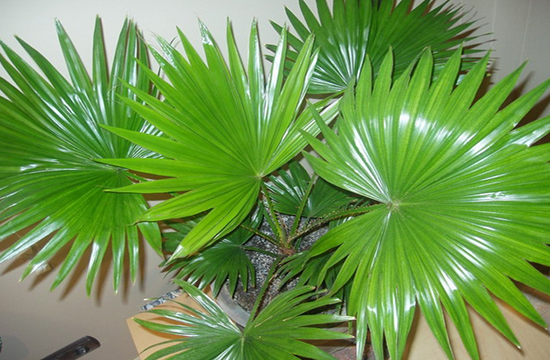
A plant called Livistona (Livistona) belongs to the Palm or Arekov family. Under natural conditions, it grows in the tropics of Asia and Australia. In the wild, it prefers high humidity, so it can most often be found in humid forests, swampy areas, near open water bodies.
It is unpretentious in care, develops quickly enough and gives beautiful ornamental greenery.
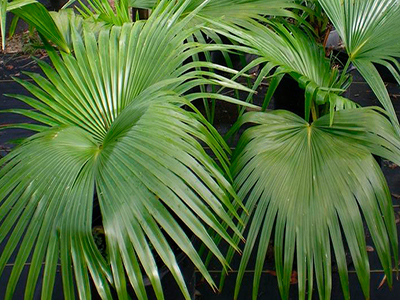
It is her who is very fond of flower growers who use domesticated species for landscaping premises.

The liviston house palm is a single-stemmed plant topped with a crown of large, glossy fan leaves.

Depending on the species in room conditions, it reaches 1.5 – 2 m.
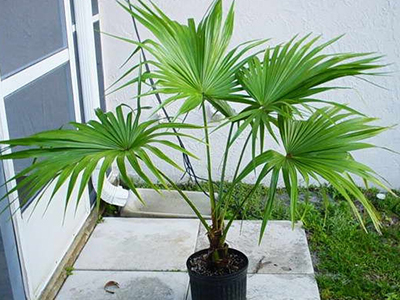
Liviston palm types
Palm trees growing in the wild are quite large plants, the cultivation of which in a limited space is almost impossible.
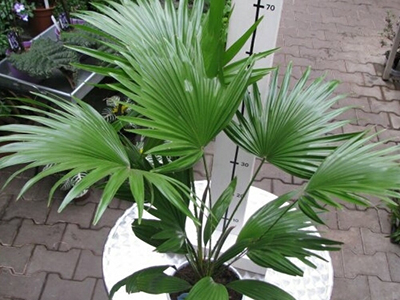
Livintona is exactly the flower that can be seen in houses.

There are just over 35 species of this plant, and the most popular are:
Liviston Chinese (L. chinensis) .
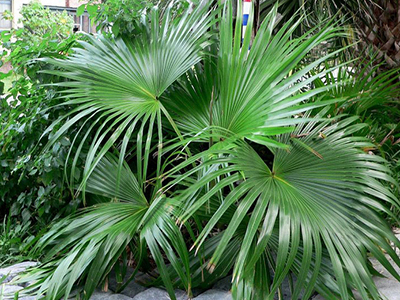
Liviston round-leaved (L. rotundifolia).

Liviston southern (L. australis).

Chinese liviston palm tree in nature can reach 25 meters. At home, with sufficient and proper care, it can grow up to 2.5 m, resting its top against the ceiling.
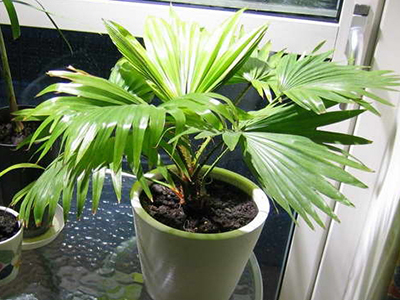
The leaves of this species are fan-shaped, which split into segments (up to 80 pieces) and are placed on petioles up to 1 m long. It has axillary inflorescences, but you can see them only with proper care. This type of liviston is very often used for landscaping large office premises, halls, shopping centers.
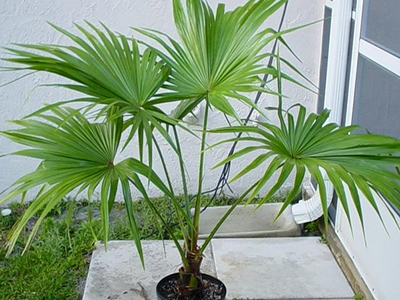
When growing it, remember that it needs a lot of space.
Livistona rotundifolia looks like a spreading plant with fairly large greenery. The island of Java is considered to be its homeland, growing there, it can reach a height of 10 m, and its trunk in girth develops up to 20 m.
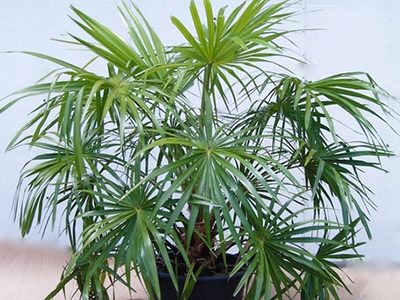
Look at the domesticated livistona palm tree in the photo.
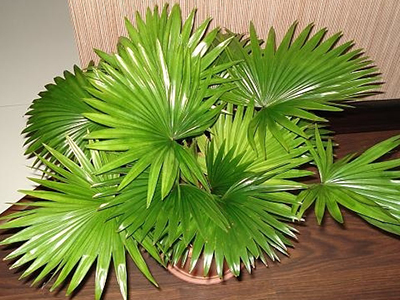
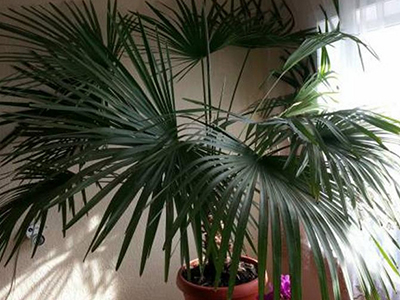
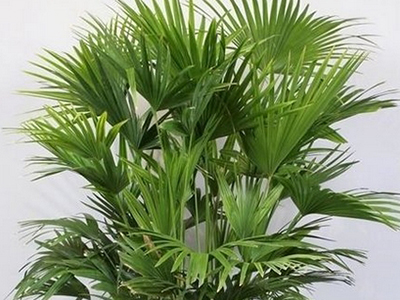
As you can see, indoors, it does not reach such large sizes and will grow no more than 0.5 m. The foliage is glossy, green, 0.5 – 1 m in diameter, has cuts into shares up to a third of the entire length. It is located on petioles 0.5 m long.
Flowers appear from the axils, most often yellow. Unfortunately, you won’t be able to see them on a domesticated plant, except perhaps on a grown flower in a greenhouse.
Livistona southern in nature grows in the subtropics (eastern part of Australia), reaches 25 m in height with a columnar trunk, which is wider at the base.
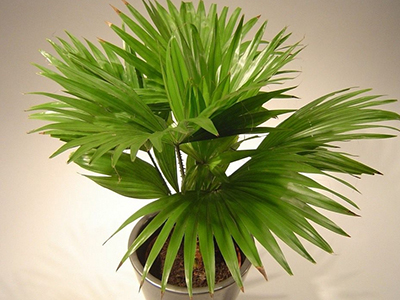
Greens are also fan-shaped, can grow in diameter up to 2 m.

The leaves of this type of liviston are dark green, fold-radial, split into lobes (from 60 pieces), which are double-notched at the end.
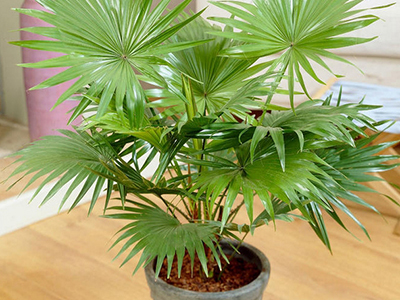
Why do the leaves of the Liviston palm tree dry?
Livistona is resistant to lack of light, heat and dry air in the room. But for better growth, it must be kept in a bright place, protecting in the summer from the rays of the midday sun.
Air humidity is one of the important requirements for how to grow a Liviston flower at home. Provide the plant with frequent and regular spraying, at least 2 times a day.
In winter, liviston round-leaved is kept at a temperature of 16-18 ° C, L. Chinese and L. southern – at a temperature of 10-14 ° C.
For young plants of L. Chinese and L. southern, soddy, compost and leaf soil, sand (1: 1: 1: 1) are needed, for adults, humus should be added and sand should be reduced by half. Livistona rotundifolia requires a lighter substrate with less sod land and more leafy.
This domesticated palm does not require special care, but nevertheless, for its good development, a flower called Liviston palm should be provided with:
- Watering.
- Spraying.
- Top dressing.
- Pruning.
This type of Palm is a very moisture-loving plant. In summer, the flower needs regular watering, but without stagnant moisture. In winter and summer, water for humidification should have a temperature of 20-22 ° C. In winter, watering is moderate. If the leaves begin to dry at Livistona, then this is a clear indicator of insufficient watering of the plant.
A flowerpot with liviston is recommended to be installed in a pan where water will run. In summer, this liquid must be drained two hours after watering, and in winter – immediately.
Frequent spraying 2-3 times a day is recommended. Also, once a week it is necessary to shower the flower or regularly wash the leaves. Warm water is used for these procedures for Liviston palm. In home care, maintaining the necessary air humidity is very important for the plant.
If your palm tree is standing in an insufficiently lighted place, over time its foliage will begin to stretch in one direction. In order for the plant to develop correctly and the crown to be uniform, it is recommended to turn the pot from time to time.
The Chinese species of Livistona is characterized by drying of the tips of the leaves. Even at a young age and with proper care of the plant, its owner can note such a feature of it. Many flower growers are in a hurry to cut off dry areas. But it is not recommended to do this, as the drying will begin to progress, which can lead to a loss of decorativeness of the plant and even its death. If you are the owner of Chinese Livistona, then measure its peculiarity and maintain optimal conditions for the flower.
You can remove the leaves from the palm tree only after the petiole dies, otherwise all the greenery will begin to dry.
In the spring-summer period (from March to September), the plants are fed weekly with flower fertilizers. This is an important condition for Liviston palm in home care.
Look at the photo what fertilizers can be used for this plant.
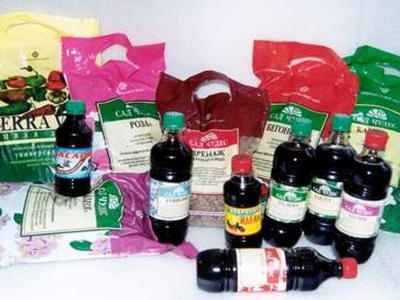


The following supplements will be useful for her:
- Organic.
- For decorative foliage flowers.
- Complex.
If you really want to grow a healthy and beautiful palm, then the frequency of fertilization during the period of active growth should be sufficient, as the plant uses a lot of nutrients for its development.
Transplanted as needed in the spring by transshipment of the flower. A pot for livistons is selected larger than the previous one, at the bottom of which drainage is necessarily laid out. When transplanting, it is also important to remove all damaged or rotten elements of the root system.
How to grow liviston palm flower from seeds
Reproduction of the Liviston flower occurs by growing from freshly harvested seeds. Despite the fact that such planting material sprouts quickly enough, it takes several years to get a beautiful plant.
It is necessary to plant seeds in February-March in prepared pots with soil to a depth of 1 cm, cover them with cellophane.
After germination, a young plant is recommended not to be covered with a film, which will allow it to get used to the conditions. When the sprouts reach 15 – 25 cm, they should be planted in separate containers. This early transplanting allows the roots of the plant to develop more quickly, without intertwining and injuring each other. Now you know how to grow Liviston at home from seeds. This process is not difficult, but requires certain knowledge.







